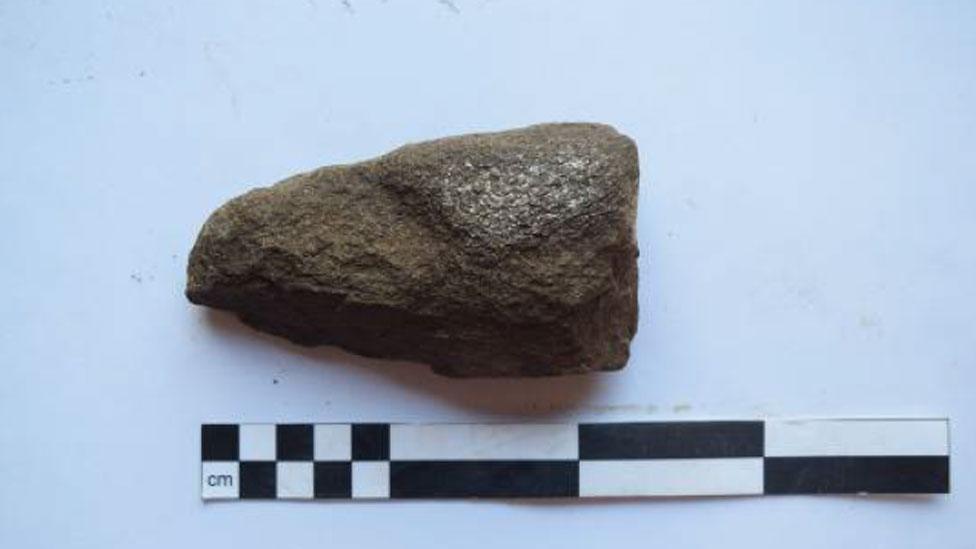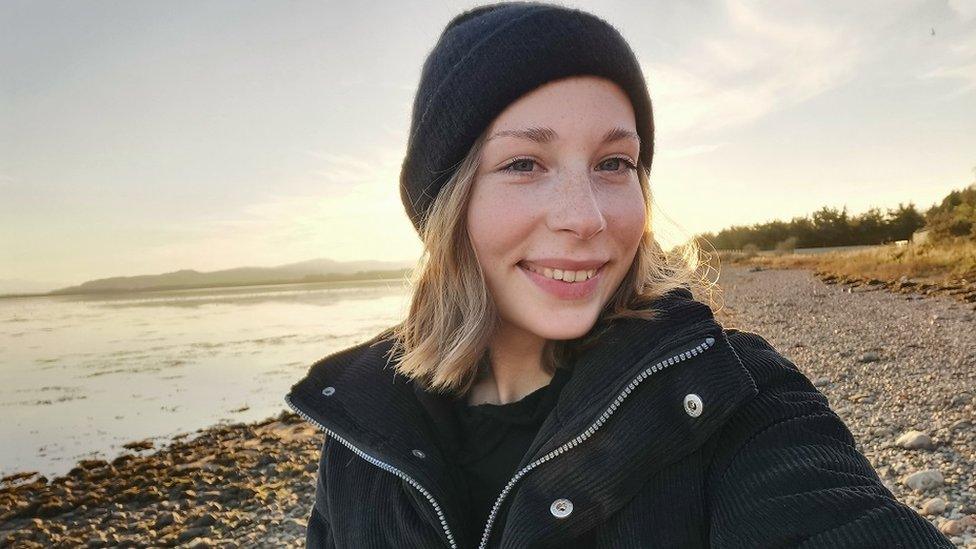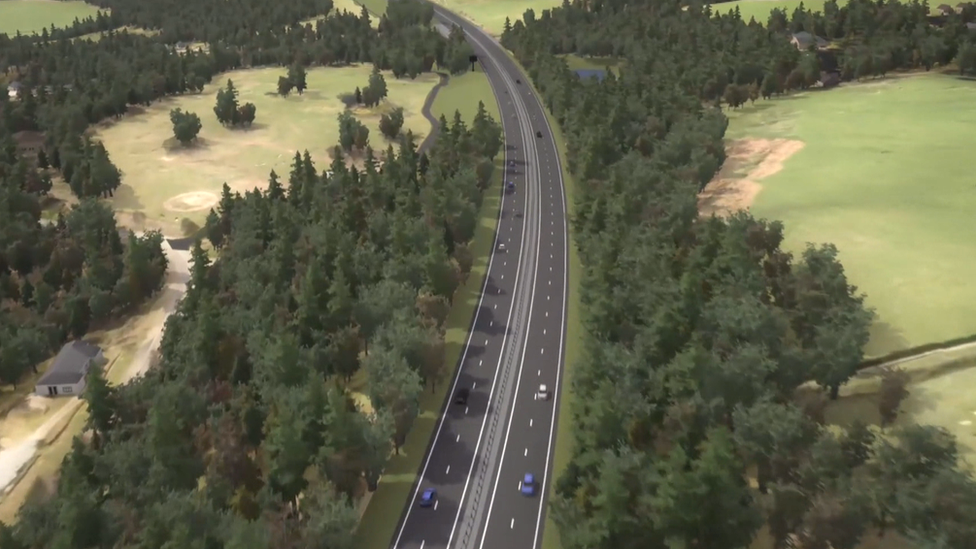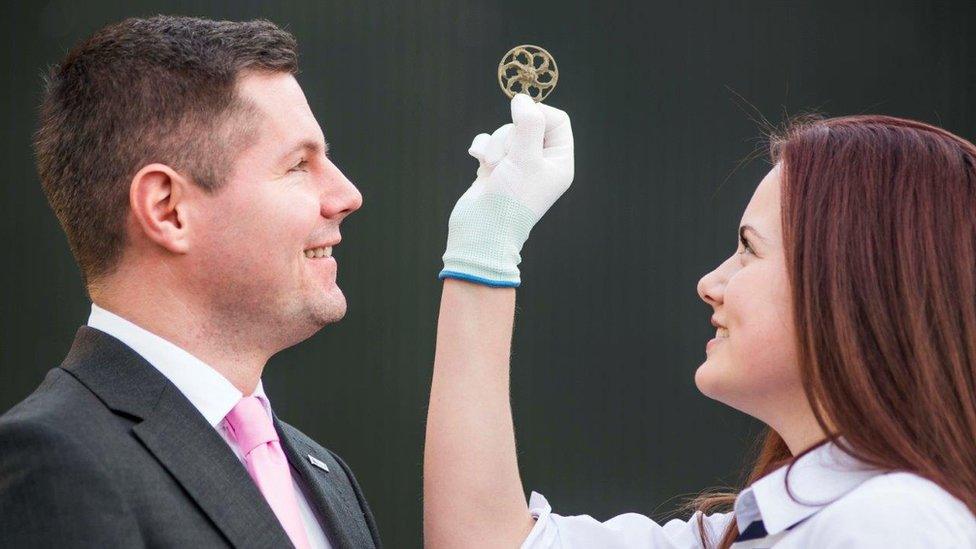'Benefits' of roadworks to archaeology reviewed
- Published

What is believed to be part of an Iron Age plough was found during work on the A9 in the Cairngorms
The potential benefits to archaeology of road building projects is being reviewed by the University of the Highlands and Islands (UHI).
The study will focus on Transport Scotland's £3bn project to dual the A9 between Inverness and Perth.
Work done so far on the road has uncovered artefacts linked to 1689's Battle of Killiecrankie as well as Iron Age finds in the Cairngorms.
Some campaigners have raised concern the work could harm important sites.
The review - by Masters student Asta Pavilionyte, funded by Transport Scotland - will evaluate and review current measures taken to ensure the protection of archaeological finds during road construction.

Asta Pavilionyte is carrying out the research
Finds made at Killiecrankie in Perthshire have included a copper alloy pendant, horse shoes, buttons, and musket munitions.
The battle took place on 27 July 1689 between a Jacobite army under the command of John Graham of Claverhouse, 1st Viscount of Dundee, "Bonnie Dundee", and a government army commanded by General Hugh Mackay.
Both armies were attempting to reach Blair Atholl to use it as a base for future operations.
The A9 dualling project at Killiecrankie has faced opposition from campaigners who are concerned the widening of the road will have an adverse impact on the battlefield, and its archaeology.

A buckle and buttons were among the items unearthed during survey work on the A9 at Killiecrankie
In the Cairngorms, a possible structure, pottery and a stone tool from the Iron Age were found during work to build a new stretch of dual carriageway on the A9 between Crubenmore and Kincraig.
Orkney Research Centre for Archaeology, which excavated the site, believed the finds could be associated with a nearby souterrain.
Souterrains are underground structures that may have been used as stores, defences or in rituals.
Artefacts have been unearthed during other road projects.
Prehistoric and Bronze Age finds have been made during work to construct the new Inverness West Link road.
Pottery fragments and the remains of kilns used for drying grain were among discoveries made at Torvean in the city.
Ms Pavilionyte's work is being carried out from Inverness College UHI and overseen by archaeologists, including Prof Jane Downes, who is director of UHI's Archaeology Institute, and also Orkney's county archaeologist Julie Gibson.
- Published13 January 2020

- Published4 December 2017

- Published3 March 2016
